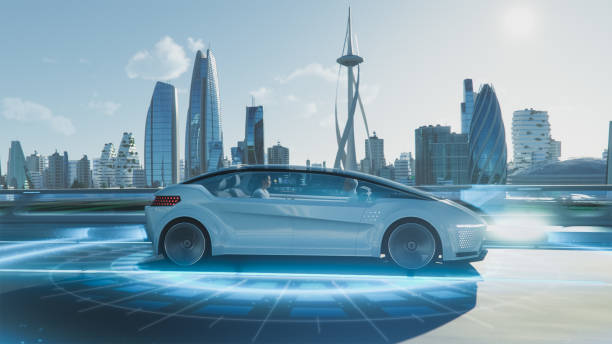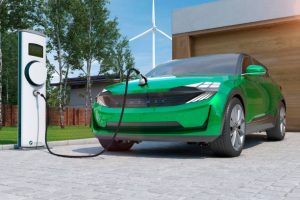Introduction
Self-driving cars are not a fantasy of a sci-fi film anymore. Self-driving cars are becoming a normal occurrence on the roads across the globe in the year 2025. These cars drive with sophisticated sensors, artificial intelligence, and machine learning to drive safely.
The autonomous vehicle is the future of roads, lesser traffic jam, and innovation of mobility. Now, we are going to investigate the future.
Autonomous Vehicles: What Are They?
Self-driving vehicles are vehicles that can drive independently. They depend on such technologies as radar, LiDAR, cameras and GPS to be aware of what is going on around them. This data is subject to AI systems to make real-time driving decisions.
Autonomous vehicles strive to recreate and enhance the work of human drivers, starting with the maintenance of lanes and ending with the avoidance of obstacles, which will result in safer and more convenient travel.
Autonomous Vehicles and How They Work.
The autonomous vehicles are a combination of technology and software. The sensory detects the state of the road, and the algorithm of AI uses this data to drive, brake, and accelerate the vehicle.
New mapping will make the vehicles aware of their position. Cars are able to communicate with traffic lights, traffic, and road infrastructure using communication systems to form a network of intelligent communication, ensuring safer roads.
Advantages of Autonomous Vehicles.
Self-driving cars have a lot of advantages. They minimize human errors which are the major cause of accidents improving road safety. Vehicles communicate with one another enhancing traffic efficiency since there is less congestion.
Also, self-driving vehicles enable the elderly and disabled individuals to have their mobility. They could drive less, emit less and help to make the future greener and more sustainable with optimized driving patterns.
In 2025, the sector is expected to experience technological advances

In 2025, autonomous cars have advanced technologies. AI models have been made smarter and able to identify complex traffic patterns in real time. There is an improved sensor to give 360 degree understanding, and a better battery technology to lengthen the electric self-driving cars self-driving variety.
Continuous improvements can be achieved with the help of cloud-based updates so that vehicles are kept up to date. These breakthroughs allow the self-driving cars to become more dependable, accessible, and as well as they have never been nearer to the mass market.
Autonomous Vehicles and Safety.
Self-driving car development is one of the most important in terms of safety. The autonomous vehicles have more than one layer of sensors to identify obstacles, pedestrians, and other vehicles. Artificial intelligence (AI) algorithms contain potential collisions and preventive measures.
These vehicles are responsive, and they will not be distracted as compared to human drivers. The intention is to use continuous testing and stringent rules to ensure the safety is as high as possible and the population can trust autonomous vehicles in 2025.
Autonomous Vehicles are faced with several challenges.
Although it is moving in the right direction, autonomous vehicles still have problems. On some consumers, they are not very accessible due to their high costs. The regulatory systems in different countries are different, making the deployment more difficult.
Technical complications, e.g. failure of sensors during severe weather conditions are a concern. The acceptance of the populace is also long. The developers are making efforts to conquer these challenges so as to make autonomous vehicles safe and reliable means of transport.
Impact on Urban Mobility
Artificial intelligence of vehicles will change the way people move around cities. Self-driving cars can also be used to better run ride-sharing services, preventing the ownership of personal vehicles. The demand of parking is lowered because the vehicles will be able to drop off passengers and locate remote parking on their own.
It is possible to manage traffic better with the help of smart city integration. These transformations cause reduced congestion, clean cities and increased time by the people to engage in productive or leisure activities.
Economic Implications
Autonomous vehicle industry has a high economic potential. Occupations associated with driving professions will change, and more opportunities in AI and software and driving technology will rise.
There are long-term growth prospects of companies investing in self-driving technology. Also, fewer accidents would save billions of health care money. With the introduction of autonomous cars into mainstream, the world economy will respond, and a balance of the challenge and opportunity will emerge.
Autonomous Vehicles of the Future

In the future, autonomous cars will keep on getting upgraded. The urban roads could be dominated by fully driverless cars. User experiences will be improved with the integration with AI assistants. Automobile-to-automobile communication will make the roads safer and smarter.
This may eliminate the traditional taxis that are used; vehicles may be transformed into personal offices and shared autonomous fleets. Self-driving cars will transform the transportation and daily life in 2025 and later.
Conclusion
Self driving cars are the future of transport. They are supposed to offer safer roads, more mobility and smarter cities. Despite the difficulties, the technological innovations are driving its use faster.
Self-driving cars will not be an innovation in 2025, but it will be a part of our life, and our ways of moving, working, and interacting with the surrounding world will be altered. It is the age of self-driving cars.












Add Comment